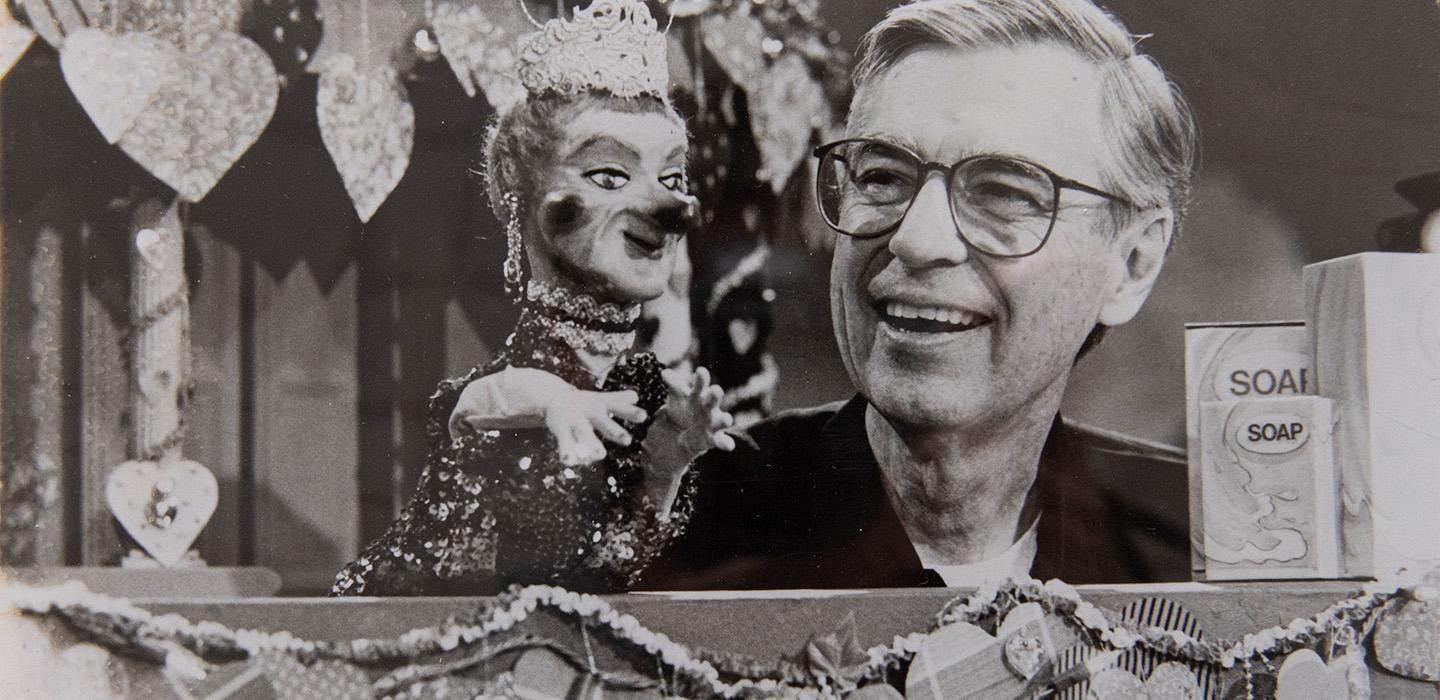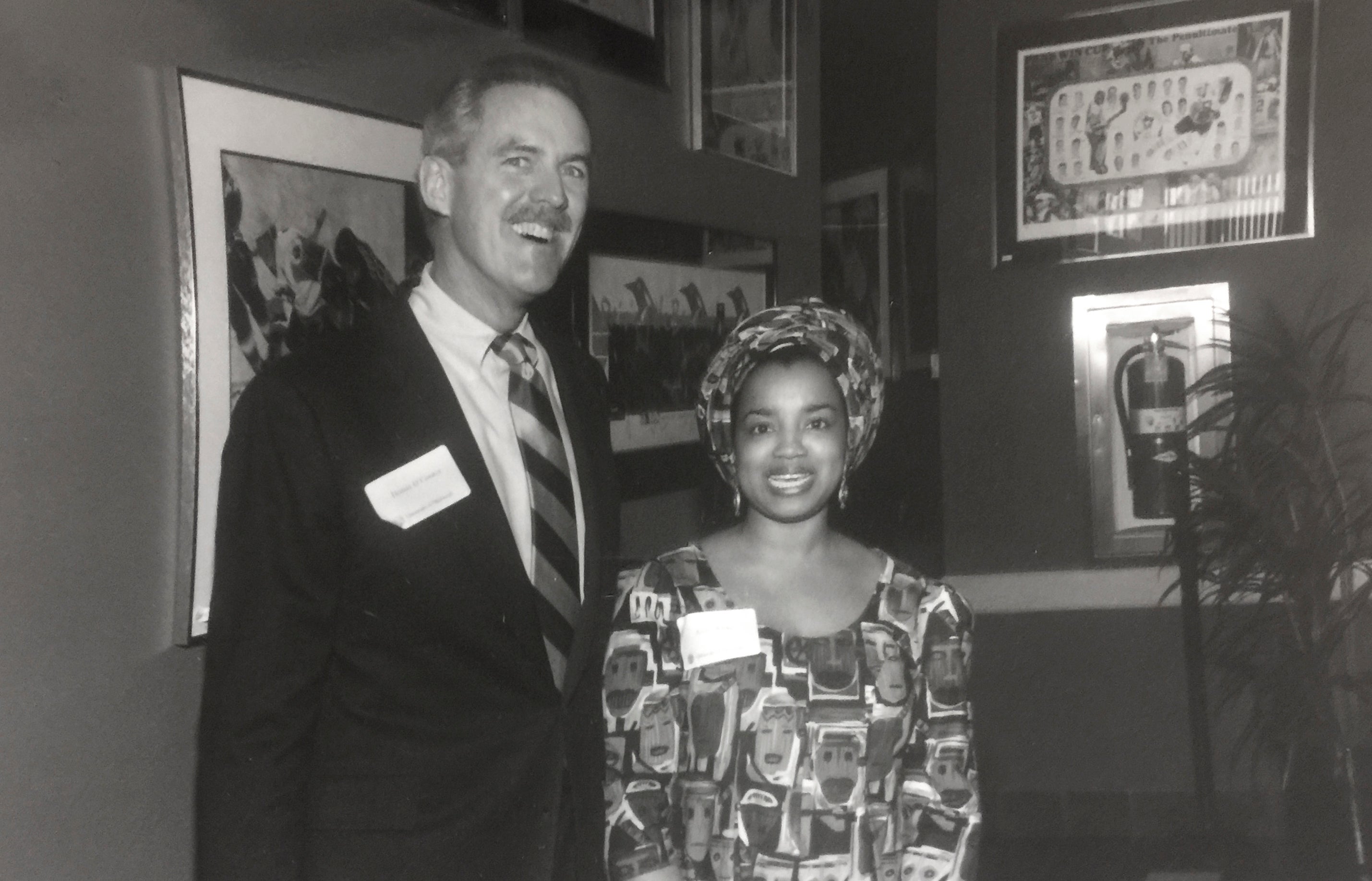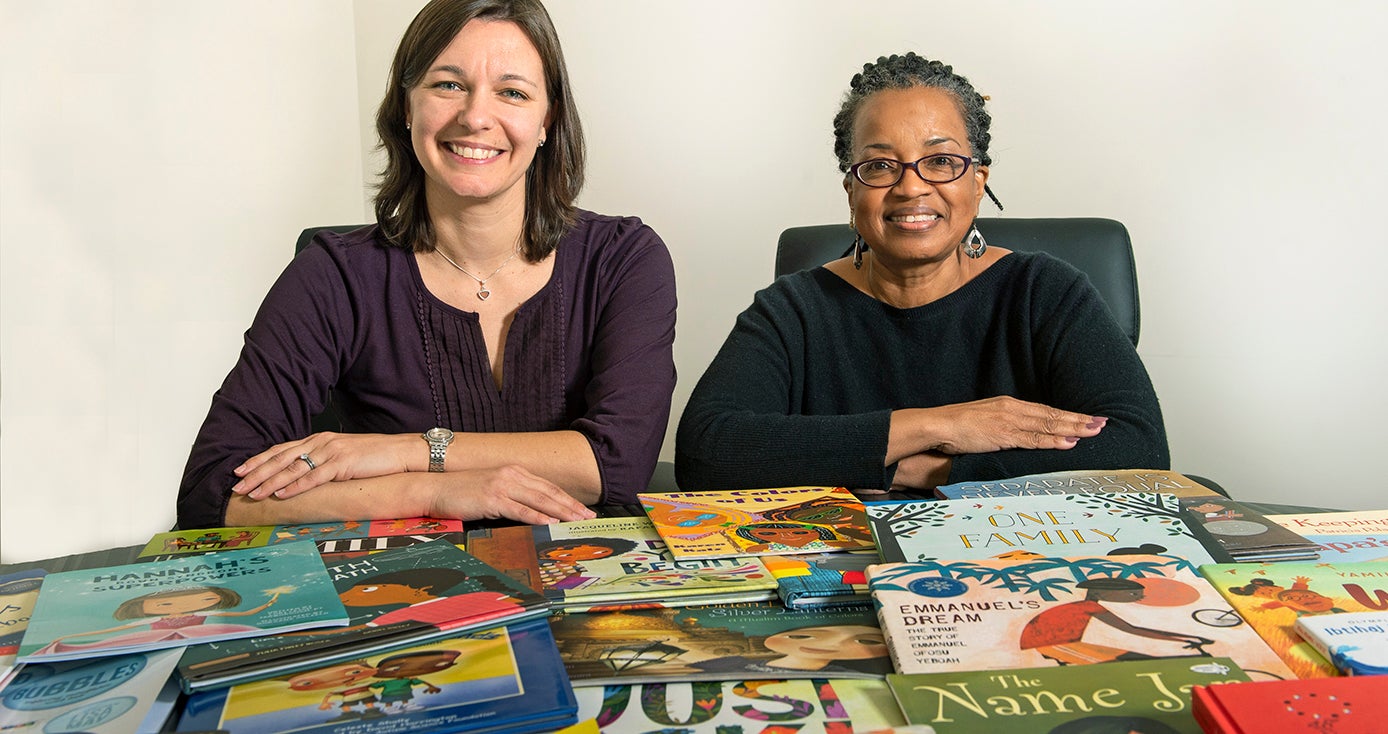
Subscribe to Pittwire Today
Get the most interesting and important stories from the University of Pittsburgh.In 1993, a library science graduate student named Aisha White got a special opportunity: to introduce Fred Rogers at her Pitt commencement ceremony.
In her speech she said, “When Fred Rogers first appeared on channel 13, I was 14, and at that age, did not hold him in awe.”
“That changed four years later,” she continued, “when I became the proud single mother of a darling baby girl, who grew to love Mister Rogers. To understand the significance of my daughter's relationship with Mister Rogers, you need only multiply that one child's fascination more than 10 million times, since over 10 million children are devoted viewers of Mister Rogers every week.”
That speech was the start of White’s long-lasting connection to the famed children’s entertainer — one that persisted long after his death in 2003.
Today, as director of the Positive Racial Identity Development in Early Education (P.R.I.D.E.) Program in the School of Education’s Office of Child Development, White (A&S ’87, SCI ’93G, ’03G) is one of the many Pitt people whose lives and careers were touched by Rogers.
“My advisor at the time was (professor emerita) Margaret Kimmel, who worked closely with Fred. She selected me to introduce Fred,” said White. “And so, onstage I talked about my daughter to make that personal connection. She loved ‘Mister Rogers’ Neighborhood.’ He was her man,” White said with a laugh.
From 1994 to 2001, White worked alongside Rogers as director of the Mister Rogers’ Neighborhood Child Care Partnership, where she developed materials for child care providers to use Rogers’ television program to support social-emotional development.
“Fred’s office was about 5 feet away from mine. He had a really small, teeny little office and if I ever had any questions, I could go in and ask,” said White.
Today, White carries on Rogers’ legacy by serving as a consultant on the creative team for “Daniel Tiger’s Neighborhood,” a modern-day interpretation of Mister Rogers’ Neighborhood produced by Fred Rogers Productions. It stars Daniel Tiger, son of Daniel Striped Tiger from the original “Neighborhood” series. Her Emmy Award-winning contributions to the show involve providing input on scripts and making sure the show is culturally relevant — even advising on hairstyles for biracial characters in the show.
White’s colleague Shannon Wanless, director of the Office of Child Development, is also a consultant for “Daniel Tiger’s Neighborhood.”
“I think every single project we’re doing at the Office of Child Development, in a way, lives and breathes the Fred Rogers legacy. We honor child development the same way he did in his work,” said Wanless. “Just like Fred did, we are constantly checking to make sure we are being true to theory and research about children.”
“Fred wasn’t afraid to take on difficult issues, and it makes me think of our work here in the Office of Child Development,” said White.
White and Wanless said a memorable phrase from Rogers ties to the P.R.I.D.E Program’s work: “What’s mentionable is manageable.”
“The P.R.I.D.E Program in particular is really trying to help us understand how racial identity is developing in young children,” said Wanless. “So, by jumping in and talking with our children, we’ll get them in the habit of turning to a parent when they need someone.”
Wanless also pointed to the Office of Child Development’s book drive called Books for Change, which she said has a similar goal: getting picture books in the hands of adults “to help them address things that may not feel mentionable to them,” and opening the door to address those things with their children.
White added that earning the trust of children, something Fred Rogers was able to do so well, ultimately happens when we talk to them — making things “mentionable.”
“Another thing Fred often said is that ‘We can never know what’s really going on inside a child’s mind.’ And we won’t know that unless we begin to have meaningful conversations with our children, develop trust with them and figure out ways to elicit conversation with them,” said White.
A longer history
Long before Rogers’ time, conversations about media for children were happening on and around Pitt’s campus—dating back to the late 1800s.
“One of the many things that are special about Fred Rogers is he was interested in how we can make media actually valuable and appropriate for children,” said Courtney Weikle-Mills, director of the Children’s Literature Certificate Program in the Kenneth P. Dietrich School of Arts and Sciences’ Department of English. “And these are questions that have been asked in Pittsburgh for a long time.”
Many of the people having those conversations, like Margaret Kimmell, Margaret Hodges and Margaret McFarland, were influential to Rogers, said Weikle-Mills.
“That longer history that Rogers is a part of is connected to the Children’s Literature [Certificate] Program in interesting ways,” said Weikle-Mills, who added that Pitt started offering courses in children’s literature as early as 1933.
According to Weikle-Mills, the program was developed as an interdisciplinary one — with the idea that people who studied children’s literature “needed to also understand child development and work with folks who were working directly with children, not just people in the English department.”
Arielle Reed (A&S ’17) is a mentee of Weikle-Mills and graduate of the Children’s Literature Certificate Program at Pitt. She now also works for Fred Rogers Productions as a production coordinator, her “dream job,” thanks to a connection made by Weikle-Mills and Tyler Bickford, associate professor and director of graduate studies in the Department of English.
Reed credits the Children’s Literature Program for giving her the necessary skills to thrive in her role today.
“Part of what Pitt helped me with is my editorial skills — critically evaluating literature and developing an editorial eye,” said Reed, who spends most of her time working on “Daniel Tiger’s Neighborhood.” “So today, I have a really honed eye for details that matter to the values of Fred Rogers Productions — which are, ultimately, the values of Fred Rogers.”
“He had a lot of things to say that translate into adulthood and being a good person on this planet. This is a necessary thing in today’s climate. I think people need it,” said Reed.
Read and view more Mister Rogers memories from Pitt people on a special website set up by the Office of University Communications.
An abbreviated timeline of children’s media and literature in Pittsburgh
1896: Pittsburgh’s Carnegie Library opens one of the first children’s reading rooms in the country.
1901: Carnegie Library Children’s Department creates Carnegie Library School— which ultimately becomes Pitt’s iSchool, and later, the School of Computing and Information.
1930s: Pitt starts offering courses in children’s literature.
Late 1950s-1980s: Fred Rogers holds weekly meetings with his Pitt mentor, Margaret McFarland.
1968: “Mister Rogers’ Neighborhood” premieres. Its production takes place for over three decades at WQED Studios, just blocks from Pitt’s campus.
1976: Margaret Hodges, graduate of the Carnegie Library School and faculty member of Pitt’s School of Library and Information Sciences, develops the Elizabeth Nesbitt Room, which houses a collection of archives from “Mister Rogers’ Neighborhood.”
1978: Margaret Kimmell, who studied under Margaret Hodges, joins the University faculty in 1978 as an associate professor in the School of Information Sciences’ Department of Library and Information Sciences.
1981: Pitt’s Children’s Literature Program is established. Kimmell is a co-founder and serves as director.
1996: Kimmel, along with Mark Collins — a creative writing instructor in the English department — edits a collection of essays titled “Mister Rogers’ Neighborhood: Children, Television, and Fred Rogers.” One of the essays included in this volume was by journalist Jeanne Marie Laskas, who would later become the director of Pitt’s Creative Writing Program.
2001: Production ends for Mister Rogers’ Neighborhood.
For more information on this history, visit the Children’s Literature program website.





